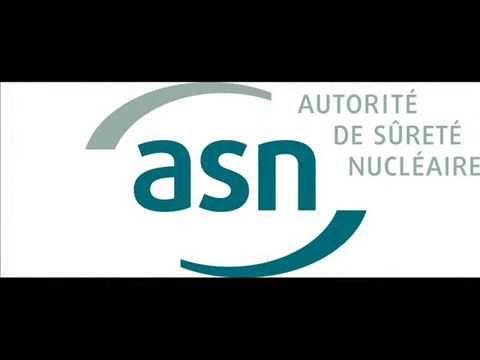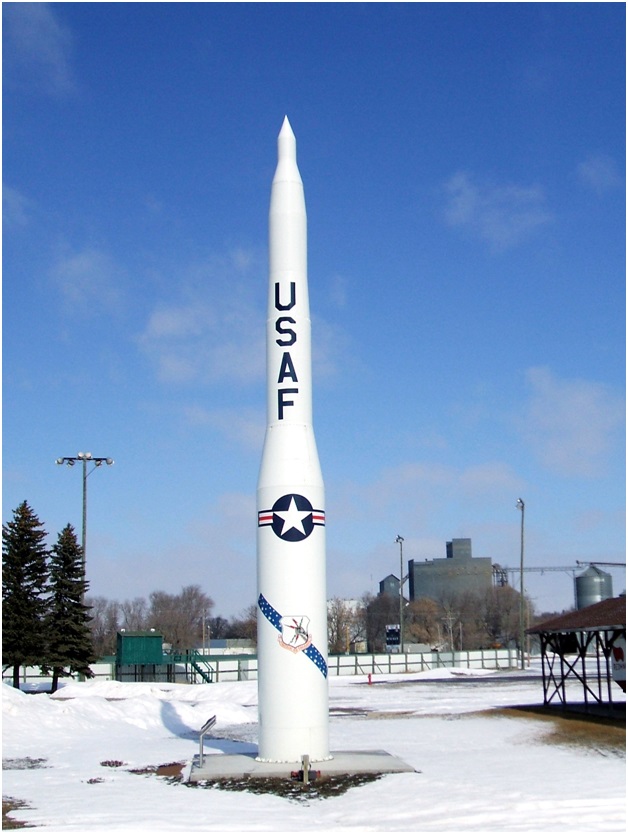
Blog
-
Geiger Readings for November 30, 2014
Ambient office = 65 nanosieverts per hourAmbient outside = 75 nanosieverts per hourSoil exposed to rain water = 89 nanosieverts per hourRed bell pepper from Central Market = 111 nanosieverts per hourTap water = 71 nanosieverts per hourFiltered water = 56 nanosieverts per hour -
Radiation News Roundup November 29, 2014
All efforts have failed to stop very high levels of radioactive materials flowing into ocean from Fukushima. youtube.com
CDC official says that there is a public health emergency in the US from Fukushima radioactive material. enenews.com
Let’s finally get a permanent solution to nuclear waste. blogs.wsj.com
North Korea dangles a nuclear war against countries that are highly critical of Kim Jong Un’s regime. au.ibtimes.com
-
Geiger Readings for November 29, 2014
Ambient office = 105 nanosieverts per hourAmbient outside = 120 nanosieverts per hourSoil exposed to rain water = 115 nanosieverts per hourRed bell pepper from Central Market = 73 nanosieverts per hourTap water = 122 nanosieverts per hourFiltered water = 117 nanosieverts per hourBlack Cod – Caught in USA = 81 nanosieverts per hour -
Nuclear Reactor 180 – France Nuclear Agency Gets Clean Bill of Health from the International Atomic Energy Agency
France has invested heavily in nuclear power reactors and now gets about fifty percent of its electricity from nuclear reactors. It is difficult to pin down exactly how much electricity France generates and consumes from nuclear power plants because it also exports some of the nuclear generated electricity. The French government runs the EDF company which manages fifty eight reactors. Recently there have been calls in France to reduce nuclear power’s share of the mix of energy sources.
The French nuclear watchdog Nuclear Safety Authority (ASN) was just subjected to a review by the International Atomic Energy Agency. The review was carried out by twenty two experts from seventeen IAEA members countries. In general, the ASN was said to be functioning properly but there was a call for more funding and staffing. One big problem is the fact that many of Frances nuclear reactors are approaching their licensed life spans of forty years. The IAEA said that the ASN was satisfactorily managing the reactors now but that in the near future, it would have to increase staffing and funding to deal with the aging reactor fleet.
The head of the ASN “has regularly warned officials of the need to increase the authority’s budget and workforce, but has so far obtained only a fraction of its estimates.” Currently, the ASN has a workforce of one thousand. The ASN needs to increase staffing to twelve hundred as quickly as possible to deal with the need to review the status of reactors reaching the age of forty. The ASN also called for a new tax on nuclear operators that would be dedicated to nuclear safety.
An expert from the U.S. Nuclear Regulatory Commission who participated in the IAEA review said that a strong safety culture was a high priority for ASN workers. He said ” Safety culture has to do with having an organization where the members feel free to come forward with problems and voice those problems to management without fear of being retaliated against.”
I am sure that the same recommendations given to France should also be given to the United States with respect to its aging fleet of nuclear reactors. Many U.S. power reactors are reaching the end of their projected life spans and their operators have applied for license renewals. These reactors are breaking down and becoming more and more expensive to repair. The U.S. Nuclear Regulatory Commission should be spending more time and money on reviewing applications for license extensions. In addition, the U.S. has got to be more protective of and encouraging to whistleblowers in the nuclear industry. The treatment of whistleblowers has been shameful with many being fired and not given a chance to make their case. Nuclear power will be a factor in global power generation for decades to come and more time, funding and staffing will be absolutely necessary to prevent more catastrophic nuclear disasters such as Fukushima.
-
Radiation News Roundup November 28, 2014
Fukushima worker says that TEPCO is covering up how much Fukushima contamination is flowing into ocean. enenews.com
Fukushima fallout on vegetation in South Florida exceeded government notification limit by over 1,000%. enenews.com
Iran may say repeatedly that its nuclear program is strictly peaceful, but the country is not allowing the world’s top nuclear watchdog to confirm that assertion. finance.yahoo.com
-
Geiger Readings for November 28, 2014
Ambient office = 114 nanosieverts per hourAmbient outside = 69 nanosieverts per hourSoil exposed to rain water = 51 nanosieverts per hourYellow bell pepper from Central Market = 110 nanosieverts per hourTap water = 87 nanosieverts per hourFiltered water = 81 nanosieverts per hour -
Nuclear Weapons 109 – Widespred Problems in the U.S. Nuclear Minuteman Missile Force
I have blogged several times about problems with the soldiers and facilities of the U.S. nuclear missile arsenal. Over the past few years there have been scandals involving top generals and commanders of the nuclear missile force. Soldiers have been caught deal drugs and cheating on their regular qualification exams. There have been a lot of news stories about these problem. The problems extend beyond the military and missiles bases into the civilian agencies that are responsible for oversight and funding. The government did not seem to be aware of the depth and breadth of the problem. The public is not paying much attention to nuclear weapons which seem to them to be an outmoded relic of the Cold War.
The U.S. government is failing to properly manage the combination of machines, people and organizations that are necessary to maintain the U.S. nuclear missile force. Part of the problem is the tighten of budgets for nuclear weapon systems. In addition, there has been a decline in political support for nuclear weapons. A recent article from the AP said, “What have been slipping are certain key building blocks — technical expertise, modern facilities and executive oversight on the civilian side, and discipline, morale and accountability on the military side.” A panel on the Governance of the Nuclear Security Enterprise stated that, “This lack of attention has resulted in public confusion, congressional distrust and a serious erosion of advocacy, expertise and proficiency in the sustainment of the nation’s nuclear weapons capabilities.” The report also said that today’s nuclear weapons are sound but that, “there is no affordable, executable (government) vision, plan or program for the future of nuclear weapons capabilities.”
The U.S. Defence Secretary called for a thorough review of the problems last February. He had previously said that there is “something wrong” in the U.S. nuclear missile forces and said that we needed both short term solutions and long term solutions to the problems. Both an internal review and an external review were concluded recently and the internal report said that there were problems from aging equipment to “a culture of excessive inspections and the blurring of the lines between accountability and perfection in the Air Force.”
The internal report and external review both stated that there was ” a nuclear workforce that was dedicated, capable, and performing well in spite of challenges resulting from being understaffed, under-resourced, and reliant on an aging and fragile supporting infrastructure in an over-inspected and overly risk-averse environment.” The Defence Department said that “Both reports identified serious issues with potential real world consequences if not addressed — some of which require long term and permanent cultural and structural changes.”
The situation is especially troubling in light of the call for spending billions of dollars in the near future to upgrade our nuclear arsenal. Without decent oversight and planning, what guarantee is there that such allocation of funds will properly spent and not wasted? It would seem to me that there is a lot of work to be done in correcting the current situation before more money is spent.
U.S. Minuteman Nuclear Missile:
-
Radiation News Roundup November 27, 2014
All efforts have failed to stop very high levels of radioactive materials flowing into ocean from Fukushima. youtube.com
CDC official says that there is a public health emergency in the US from Fukushima radioactive material. enenews.com
Let’s finally get a permanent solution to nuclear waste. blogs.wsj.com
North Korea dangles a nuclear war against countries that are highly critical of Kim Jong Un’s regime. au.ibtimes.com
-
Geiger Readings for November 27, 2014
Ambient office = 92 nanosieverts per hourAmbient outside = 68 nanosieverts per hourSoil exposed to rain water = 72 nanosieverts per hourOrange bell pepper from Central Market = 77 nanosieverts per hourTap water = 122 nanosieverts per hourFiltered water = 115 nanosieverts per hour -
Radioactive Waster 110 – Washington State Attorney General Intends to Sue The U.S. Department of Energy Over Hanford Safety
I have blogged on the Hanford Nuclear Reservation many times. I have attended events put on by the United States Department of Energy to solicit public input for the Hanford cleanup. The representative of the DoE were well schooled in public relations but they were not able to soothe the critics who had good reason to be skeptical given the dishonesty and incompetence of past DoE pronouncements and behaviors.
During the past year there have been several incidents at Hanford where more than 50 workers have become ill after they breathed vapors emitted by some of the one hundred and seventy seven underground storage tanks of nuclear waste. The DoE said that doctors cleared all the workers to return to work and that there were no permanent health problems related to the incidents. Some of the exposed workers begged to differ. Now the State of Washington has become involved.
On November 19, 2014 Bob Ferguson, the Attorney General of the State of Washington, stated that “Hanford workers face a very real and immediate health risk.” Ferguson said, “The federal government has a responsibility to keep these Washington workers safe, and I intend to hold them accountable.” There is a ninety day window for a lawsuit to be filed after the intent to file has been announced. The Washington AG said that the ninety day clock started with his public statement.
In the past couple of decades, tanks workers have reported “nosebleeds, headaches, watery eyes, burning skin, contact dermatitis, increased heart rate, difficulty breathing, coughing, sore throats, expectorating, dizziness and nausea,” Ferguson said. “Several of these workers have long-term disabilities.”
A report issued last month by the DoE’s Savannah River National Laboratory on the vapor release situation stated that “the methods used to study the vapor releases were inadequate.” One of the problems that the report highlighted was the methods currently in use do not take into account short intense releases of vapors. There are ten major recommendations accompanied by over forty supporting recommendations. These recommendations include ” proactively sampling the air inside tanks to determine its chemical makeup; accelerating new practices to prevent worker exposures; and modifying medical evaluations to reflect how workers are exposed to vapors.”
The work on the report was triggered by a request from Washington River Protection Solutions(WRPS) which is the DoE’s prime contractor for managing the nuclear waste stored at Hanford. Hanford was used to develop and manufacture nuclear weapons for the U.S. arsenal for decades. Nuclear waste disposal was conducted in a haphazard and poorly documented fashion. In the decades since the weapons work halted in 1987, there has been a long string of radiation releases and missed deadlines for cleaning up the nuclear waste that remains.
My research for this blog has uncovered many examples of the incompetence and dishonesty of the DoE and its contractors at Hanford. I am pleased that the State of Washington is moving to take legal action against the DoE’s failure to secure the safety of workers at Hanford.






